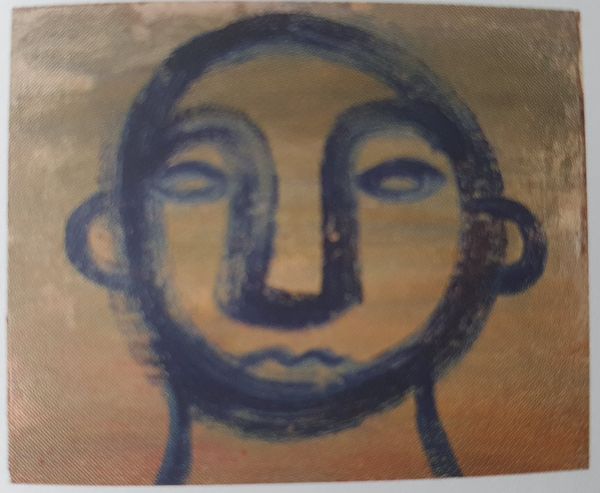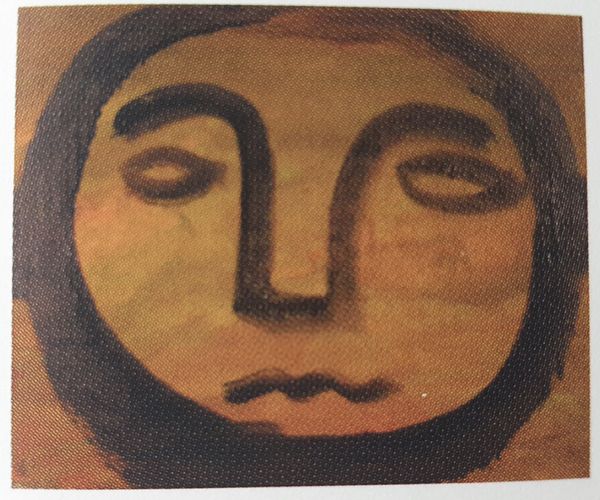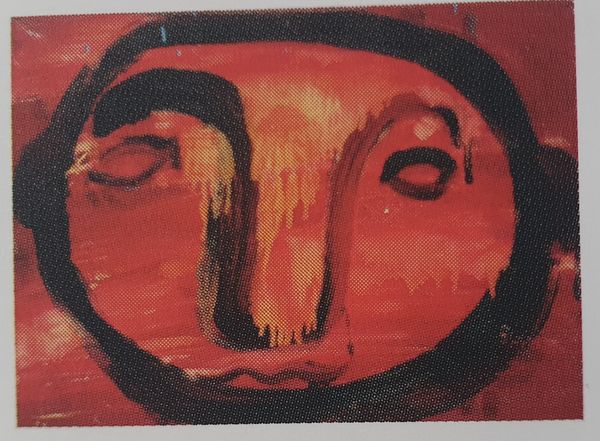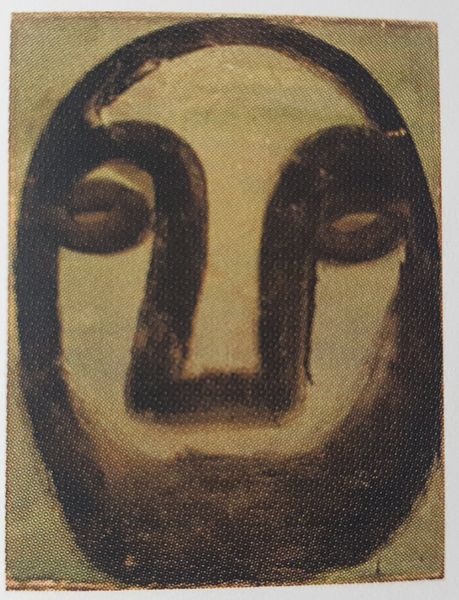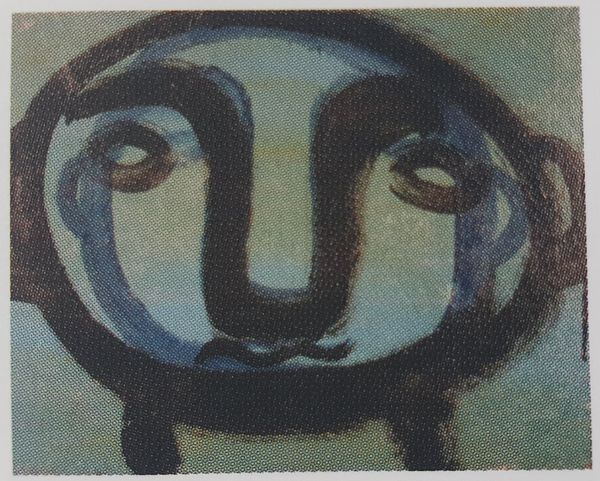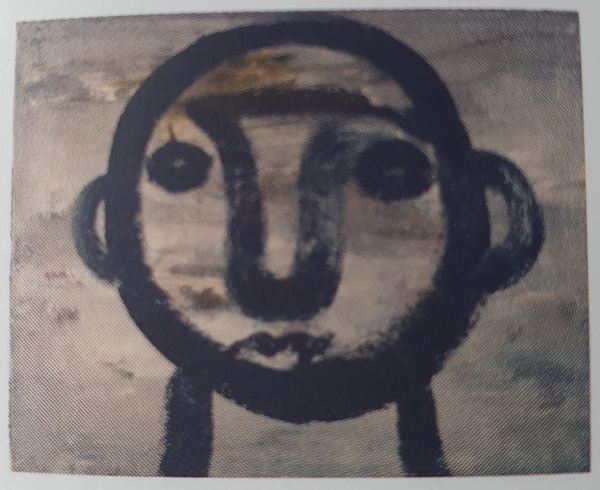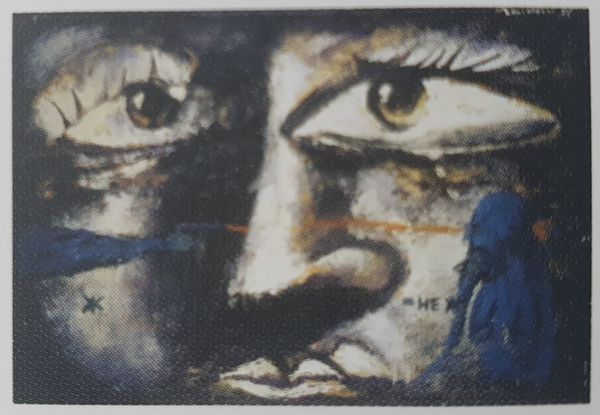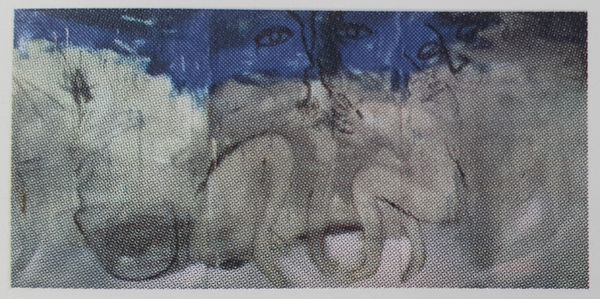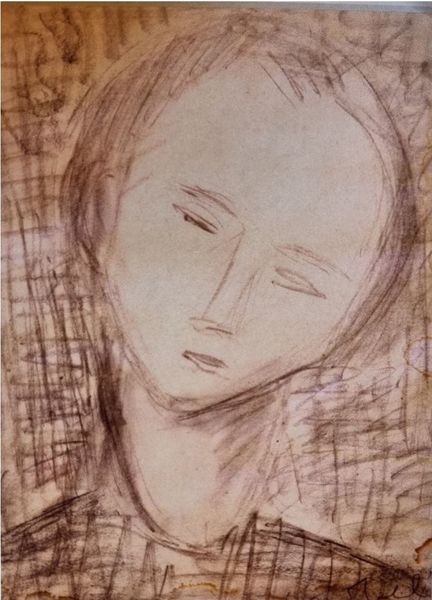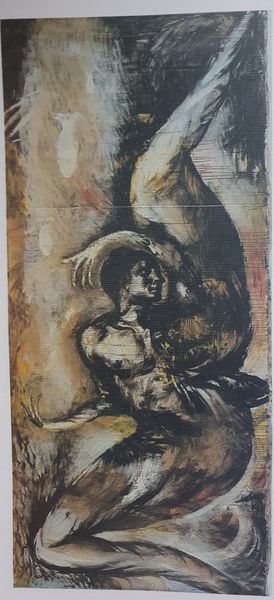
painting, oil-paint
#
portrait
#
contemporary
#
painting
#
oil-paint
#
figuration
#
oil painting
#
abstraction
#
line
#
watercolor
Dimensions: 50 x 70 cm
Copyright: Oleg Holosiy,Fair Use
Curator: Here we have Oleg Holosiy's "Mascaron," created in 1990. Holosiy was a significant figure in the Ukrainian New Wave movement. Editor: It’s stark. The face seems quickly rendered in broad, dark outlines on a field of warm browns and greys. There's a raw, almost primitive quality to the way the features are defined. Curator: That raw quality reflects the sociopolitical anxieties of the late Soviet era in Ukraine, just before its independence. Holosiy used art as a vehicle for processing the shifting cultural landscape, often with an undercurrent of disruption. The almost mask-like presentation could be interpreted as commentary on the roles and expectations forced upon people during that period. Editor: I’m intrigued by the contrast between the bold, graphic lines and the almost washy background. The looseness of the ground seems to make the graphic lines feel that much more deliberate. It creates tension, almost like the face is emerging or dissolving. Curator: Precisely. His focus on figuration was a deliberate choice in a time of both increasing freedoms, and persistent restraints. Consider the implications of representing the human figure in a society that was theoretically egalitarian but demonstrably not. The "Mascaron" wasn’t just a face, it was a statement. Editor: Do you think the title, “Mascaron,” plays into this sense of imposed roles? It gives me this feeling of a kind of ornament or architectural detail devoid of true depth. Curator: Absolutely. The "Mascaron," a decorative grotesque, further emphasizes this concept of surface versus depth, facade versus reality. The figure is a construction. Editor: I hadn’t considered the art-historical tie-in. It feels more emotionally honest seeing this work through the lens of its social context, of a period with people struggling toward self-expression. The way those graphic lines define the image is almost an act of rebellion. Curator: Indeed. Holosiy used painting to provoke reflection on the societal frameworks surrounding the self, frameworks that his “Mascaron” seems determined to transcend. Editor: I appreciate the fresh sense of urgency. Thinking of Holosiy's artistic choices really clarifies what it took for artists to work within the political realities of that time.
Comments
No comments
Be the first to comment and join the conversation on the ultimate creative platform.
